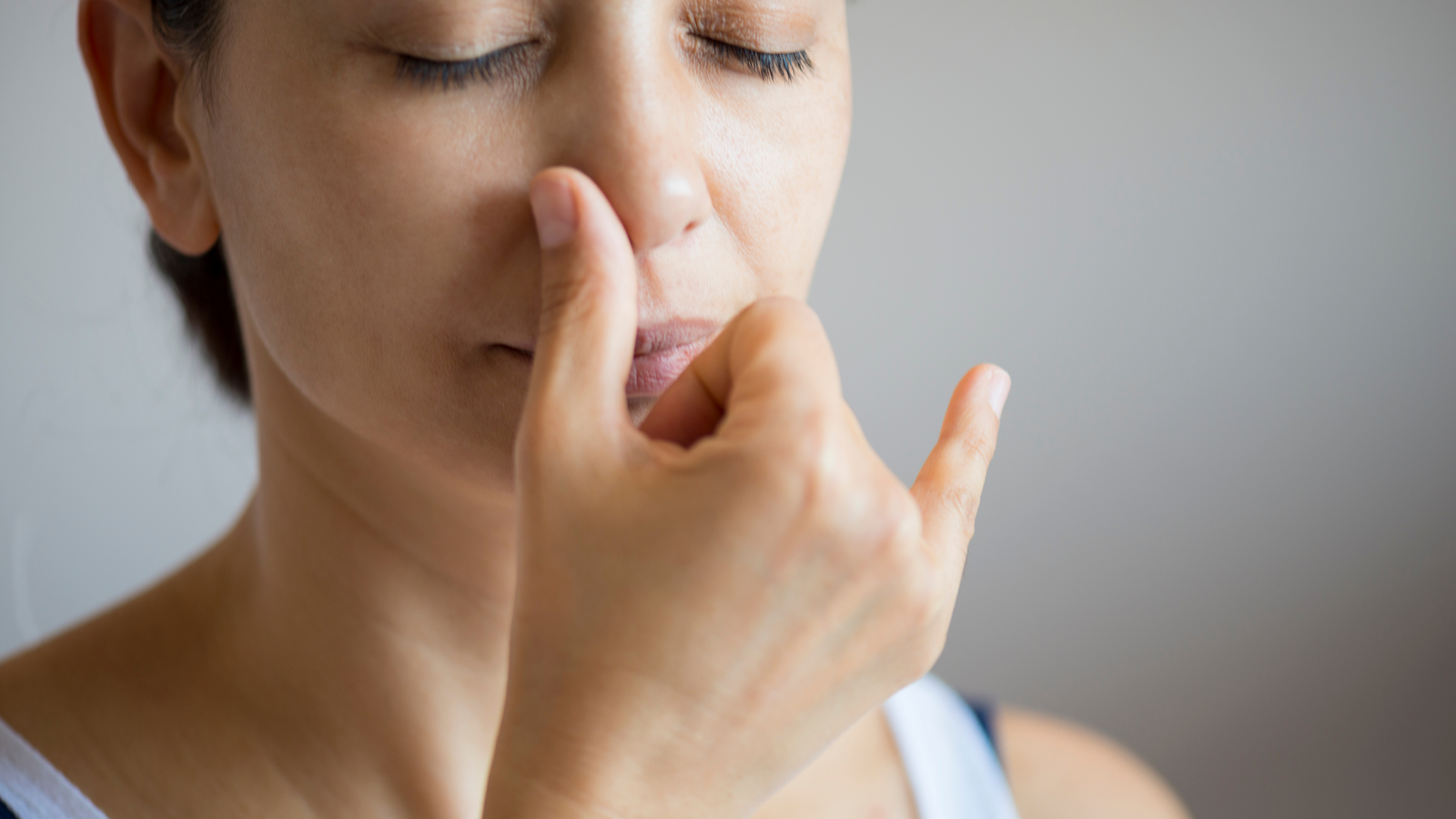As oxygen levels in your body decrease, the brain’s receptors are set off. Your brain then sends a message to your blood vessels to send more of the current oxygen in your body to the heart and the brain since they are vital organs. This increases blood flow and puts pressure on the walls of your blood vessels. As a result, your blood pressure increases. High blood pressure, also known as hypertension, can increase your chances of stroke or heart disease. This is a huge concern for people with sleep apnea, a sleep condition caused by the airway becoming obstructed while sleeping. Unlike high blood pressure caused by a person’s weight or a poor diet, high blood pressure caused by sleep apnea and other breathing issues can’t be improved without breathing correctly. If you have sleep apnea, a continuous positive airway pressure (CPAP) machine can help you breathe effectively while sleeping.
Poor Breathing Leads to High Blood Pressure
For those without sleep apnea, your blood pressure may still be elevated as a result of chronic mouth breathing. When we mouth breathe, we're actually over breathing, meaning that we are inhaling and exhaling too much air per minute. This throws off our oxygen-carbon dioxide balance and puts stress on our cardiovascular system as a result. Thankfully, switching to nose breathing, also known as nasal breathing, has been shown to lower blood pressure and can also lower stress. According to a study completed in 2013, people who practice nose breathing exercises have lower stress levels than those who don’t. Nasal breathing was the only type of breathing exercise that they found to improve heart rate, blood pressure, and respiratory rate. Nasal breathing also affects the parasympathetic nervous system, which can have a positive effect on blood pressure.

The Parasympathetic Nervous System
Your autonomic nervous system controls each and every one of the involuntary functions in your body like your breathing rate and heart rate. There are two different divisions of your autonomic nervous system: the sympathetic and the parasympathetic. The sympathetic division causes your “fight or flight” reaction. When activated, your sympathetic nervous system sends a message that makes your blood vessels contract and your heart rate increase. Adrenaline production is also increased. The purpose of this is to help you either fight off physical threats or run away from them. However, due to the stresses of modern-day life, this system is activated more often than normal -- even when there is no physical threat around. This can cause heart attacks, type two diabetes, hardening of the arteries, and more. The adrenal fatigue caused by overstimulation of the sympathetic nervous system can lead to lightheadedness or even loss of body hair.
On the other hand, your parasympathetic nervous system is responsible for the opposite reflex. Once it is activated, your heart rate decreases, blood vessels dilate, and your breathing rate slows. This helps you to rest and relax. Slow and deep breathing through the nose activates your parasympathetic nervous system, which reduces your blood pressure overall. Your brain enters a state of relaxation, replacing stress with a more calming mindset. If you’re facing a stressful situation at work or home, take a moment to breathe. This can lower blood pressure and help you feel at ease. There are also few blood pressure breathing exercises to try out to breathe your way to healthier blood pressure.
Lower Blood Pressure With These Breathing Exercises
Diaphragmatic Breathing
The diaphragm is a dome-shaped muscle located below the lungs that contracts to aid in breathing. Diaphragmatic breathing, also known as belly breathing, has been shown to decrease cortisol, a stress hormone that can be harmful to the body. Breathing through the diaphragm allows for more oxygen to enter the body, which helps to power the muscles and brain. To begin, lay flat on your back. Bend your knees slightly and be sure your neck is supported with a pillow if needed. Place one hand on your chest and the other hand underneath your rib cage. Inhale slowly through the nostrils. You should feel the hand that you placed under the rib cage rise. The hand placed on your chest should not move. Then, exhale slowly through the lips, but keep them pursed. The hand on your chest should continue to stay still, but the hand beneath your ribcage should fall. Repeat as needed.
30 Second Breathing Exercise
Sometimes, all we need to do to breathe more efficiently (and lower blood pressure) is to slow down our breathing. Deep breathing has even been shown to stimulate the lymphatic system, which helps to detoxify the body. Studies show that taking six deep breaths over a period of thirty seconds can greatly reduce blood pressure. Begin by sitting still and setting a timer for thirty seconds. Take six deep breaths over the thirty seconds. If done correctly, this should equate to about five breaths. Repeat as needed, focusing on breathing through the nostrils only.

Alternate Nasal Breathing
Many yoga teachers teach alternate nostril breathing to help regulate emotions and stress. During alternate nostril breathing, it’s important to keep your breath smooth, slow, and gentle. Sit in a comfortable position and place your left hand on the left knee. Then, move your right hand toward your nose. Exhale and use your right thumb to press on your right nostril. Inhale through the left nostril and then press on the left nostril with your fingers. Open up the right nostril and exhale through the right side of the nose. Inhale through the right nostril and then press it closed. Open the left nostril and exhale through the left side of the nose. All of these steps equate to one cycle. You can continue this breathing exercise for up to five minutes. It’s traditional in yoga to finish this practice by exhaling on the left side.
Keep Nasal Breathing at Night With Somnifix
Even after practicing these breathing exercises, you may be worried about how you’re going to keep nasal breathing into the night. Don’t fret! Thankfully, mouth strips make it possible to sleep without worry that you’re breathing correctly. If you’re concerned about high blood pressure or the overall quality of your health, nasal breathing and blood pressure breathing exercises are a great start toward getting things under control. There are many breathing exercises you can practice while you’re awake to regulate blood pressure. Our mouth strips help you practice nasal breathing in your sleep! It’s easy as peel, stick, and sleep!




